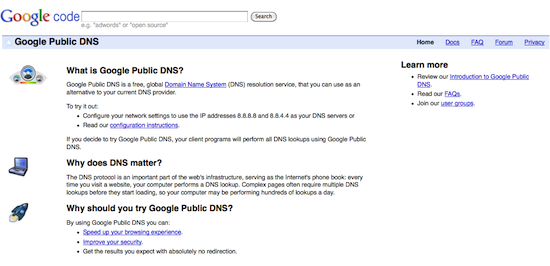With pre-election talk of new telecom laws and in the aftermath of the Comcast decision, I was hoping to not revisit the spooky crypt containing moldy Supreme Court decisions and worm-eaten FCC regulatory rulings for a few months. But I was dragged back into this basement last week, when I received an email about a new study commissioned by “Broadband For America.”
BfA is “dedicated to making broadband available to all Americans” and counts former FCC commissioner Michael Powell as an honorary co-chairman. There’s not much else about the organization on their web site, besides a list of, ahem, grass-roots organizations that make up its membership. You can read more about BfA in the reference section.
Written by University of Pennsylvania law professor, Christopher Yoo, “Reclassifying Broadband as a Title II Telecommunications Service” takes the view that because the FCC’s third-way approach is in contradiction of statutes, rulings, Supreme Court decisions, and plain common sense that it can not possibly pass legal muster..
Leaving aside the ultimate prospects of the FCC’s third-way proposal, I forced myself to reread sections of the Supreme Court’s very weird Brand X decision and face other demons from the nether world, including the information services-telecommunications dichotomy.
Which is to say if a network has “information” does that contaminate the other part of the network?
The answer apparently is yes.
We can all agree, I hope, that the telecom laws need to be updated and incorporate some ideas from the world as we know it—OSI layers, super intelligent devices and dumb networks, Claude Shannon, etc. Until then we have to deal with the telecom as it has been processed and digested by the current regulatory-legal dragon.
It is difficult to discuss and weigh all of Yoo’s arguments, but one line of thought that stands out is that information services and telecommunications are mutually exclusive. And when they’re mixed together, the information virus ends up morphing a telecommunications organism into an info one.
Here’s Yoo:
Elsewhere Yoo expands upon the definition of information services, as written in the Communications Act, but he quotes selectively:
He leaves out the rest of that pesky sentence as written in the statute (see USC 153.20 ): “ but does not include any use of any such capability for the management, control, or operation of a telecommunications system or the management of a telecommunications service.”
So, we have to give the architects of our current telecom law a little bit of credit in allowing the fact that information can co-exist with communications without changing the nature of a telecommunications service.
In other words, you don’t necessarily get cooties if your network has information in it. (I hate writing those words, but you have to engage in this kind of discourse in FCC-ville. Forgive me Claude Shannon.)
Unfortunately, the Supreme Court has a different view on what management of a telecommunications service means. Sigh.
A good part of Yoo’s argument on why the FCC’s reclassification plan will fail in the courts is devoted to … the Internet’s Domain Name System or DNS!
It is a tedious experience to read Yoo emphasizing and repeating the fact that DNS involves storing and caching of freakin’ mappings of URLs to addresses as proof that cable broadband ISPs are providing an information service to users, as defined by his abbreviated version of the statute.
Hey, DNS is mere bookkeeping for the IP protocol, and is no different than, let’s say our beloved PSTN’s switching points translating phone numbers—the URLs of the phone world—to circuit numbers.
You can’t blame the guy, because he’s echoing our Supreme Court’s own bizarre reasoning in the Twilight-zonish Brand X decision that upheld the FCC’s Cable Modem declaratory ruling—the infamous u-turn our telecom regulators took in classifying cable broadband as an information service back in 2002.

Google’s DNS: the service that can’t exist outside of an ISP
Quick Brand X recap: the Court found that the FCC reasonably interpreted the statutes in deciding that cable broadband providers are not offering a separate telecommunication service.
Justice Thomas in writing the majority opinion cited, yes, DNS as an information service that is essential to Internet access but not offered separately by the cable companies.
Thomas, in a footnote, goes out of his way in explaining how DNS is actually not about management, control, or operation of a telecommunications system (and indirectly addresses Scalia’s very funny and spot-on dissent on this whole mess.)
Thomas can now confidently reason that the information cooties from DNS ends up transforming cable modem into an information service. QED.
With the Brand X decision in one window and the FCC’s ruling on ATT’s Phone-to-Phone IP telephony petition (in which the information cooties idea was taken to new heights but ultimately rejected by the FCC) in another, I read Yoo’s sentence “inextricable combination of transmission and computer processing makes it impossible to characterize broadband Internet access as the offering to the public of a pure and transparent transmission.
No mas.
Maybe this week I’ll start exploring Google’s open-source public DNS, which can’t exist according to Michael Powell, Justice Thomas, and Chris Yoo.
Related articles
- New Study Concludes FCC Action on Title II Unwarranted (broadbandforamerica.com)
- Telecommunications by Any Other Name (technoverseblog.com)
- NCTA vs. Brand X (techlawjournal.com)
- Google Public DNS (code.google.com)
- Art Brodsky: Net Neutrality And The New Congress — Meh (huffingtonpost.com)
- Want to Play FCC Fantasy Football? Follow the Title II Debate. (wetmachine.com)
- Broadband for America: Same Lobbying Crap. New Name. (dslreports.com)



Pingback: Tweets that mention The Technoverse Blog | Brand X and Information Cooties | -- Topsy.com